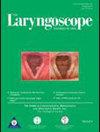Instrumentation Considerations for Calcified Thyroid Cartilage during Chondrolaryngoplasty
Abstract
Objective
Chondrolaryngoplasty, also known as thyroid cartilage reduction, alleviates gender dysphoria by reducing the thyroid cartilage to conform to a patient's gender identity. Reduction of the thyroid cartilage prominence (“Adam's apple”) is often performed with a scalpel, but in cases of cartilage calcification, rongeurs or drills are utilized. This study aims to characterize the success rate with scalpel-only excision and relate this to patient age and operative time.
Methods
Billing records were screened for chondrolaryngoplasties performed between 2020 and 2023 by a single surgeon. Patient demographics, operative notes, and operation duration were recorded. Type of instrumentation was categorized as scalpel only, rongeur, or drill. All cases began with attempted scalpel excision of cartilage and were transitioned to rongeur or drill if there was calcification that prevented sharp excision. Descriptive statistics were used to describe patient and surgical factors.
Results
52 individuals underwent chondrolaryngoplasty: 30 cases (57.7%) had soft cartilage requiring only a blade, 22 (42.3%) required use of either drill or rongeur. The average age of these groups was 25.7 (SE 1.8) and 41.3 years (SE 2.2), respectively; this difference was statistically significant (p < 0.0001). Cases requiring a drill or rongeur lasted on average 78.5 min (SE 2.3), whereas those using only a blade were shorter at 66.8 min (SE 2.7); this difference was significant (p = 0.0017).
Conclusion
Cartilage calcification should be expected in a significant number of chondrolaryngoplasties, and surgeons should be prepared for this scenario. The need for alternative instrumentation is higher in older individuals and may extend procedural time.
Level of Evidence
4 Laryngoscope, 135:748–751, 2025


 求助内容:
求助内容: 应助结果提醒方式:
应助结果提醒方式:


